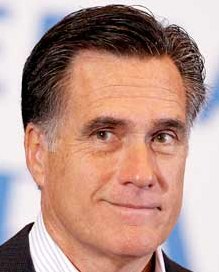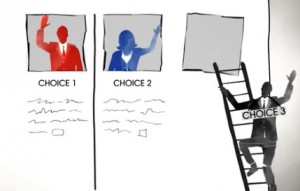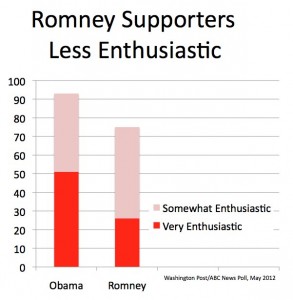
Every few weeks one article or piece of punditry in the avalanche of expert bloviating hits a nerve and stands out, head and shoulders above the rest. Last week it was a long column by veteran neo-con warrior Robert Kagan, (i.e. anything but a hippie Socialist), in The Washington Post, titled “Our Constitutional Crisis is Already Here.”
It’s impact was obvious by the sheer number of mentions it got and reaction it provoked — and continued to provoke for days — from talking heads at CNN, MSNBC, PBS and other credible news organizations. The fact that it garnered responses — with multiple quotes — from other political outlets confirmed that Kagan had stuck a prod pretty deep into the collective consciousness.
If you haven’t already, you owe it to yourself to set aside 20 minutes and read the whole thing. Why? Because, as the reaction to it makes clear, Kagan is talking about something both immediate — as in right now and getting worse — and very scary.
The absolute minimalist gist of it is that while most of us have tried to enjoy a post-COVID summer and return to normalcy (it hasn’t worked out well), taken the kids out to overrun national parks and are now revved up for football season, the seditious actors who enabled Donald Trump through his reign of idiocracy, fomented and then denied the insurrection of January 6, are (very) actively at work on a more comprehensive, sophisticated plan/plot for 2022 and 2024 in particular.
Much of that has been said elsewhere, but Kagan went where others have not, by saying things like:
“What makes the Trump movement historically unique is not its passions and paranoias. It is the fact that for millions of Americans, Trump himself is the response to their fears and resentments. This is a stronger bond between leader and followers than anything seen before in U.S. political movements.”
And … ” … no doubt a good number of Trump supporters have grounds to complain about their lot in life. But their bond with Trump has little to do with economics or other material concerns. They believe the U.S. government and society have been captured by socialists, minority groups and sexual deviants. They see the Republican Party establishment as corrupt and weak — ‘losers’, to use Trump’s word, unable to challenge the reigning liberal hegemony.”
And … “Most Trump supporters are good parents, good neighbors and solid members of their communities. Their bigotry, for the most part, is typical white American bigotry, perhaps with an added measure of resentment and a less filtered mode of expression since Trump arrived on the scene. But these are normal people in the sense that they think and act as people have for centuries. They put their trust in family, tribe, religion and race. Although zealous in defense of their own rights and freedoms, they are less concerned about the rights and freedoms of those who are not like them. That, too, is not unusual. What is unnatural is to value the rights of others who are unlike you as much as you value your own.”
And … ” … [in 2024] Trump would have advantages that he lacked in 2016 and 2020, including more loyal officials in state and local governments; the Republicans in Congress; and the backing of GOP donors, think tanks and journals of opinion. And he will have the Trump movement, including many who are armed and ready to be activated, again. Who is going to stop him then? On its current trajectory, the 2024 Republican Party will make the 2020 Republican Party seem positively defiant.”
It’s a very dystopian view, (much like Bart Gellman’s startling pre-election 2020 scenario in The Atlantic), and vividly imagined. Kagan asks why we would assume violence would not be a logical option were the 2024 election in dozens of states challenged and locked up for months in tortured Federalist Society-style arguments?
The people I think of as sanguine conventionalists, the musty, tradition-bound crowd who prefer to believe that even today Trumpism is a passing fad and that soon enough … one of these days … when he’s gone too far … adults will step in and stop the madness, simply block out Kagan’s view rather than fully considering everything already in motion at this moment.
I shouldn’t have to go through the long list of irrational, cult-like behavior erupting across the country. But when school districts are pleading for law enforcement or the National Guard to control school board meetings where Trump-ish partisans are brawling and throwing out death threats over “liberal” vaccines and masks, how difficult is it to imagine gun play as the next level down?

Kagan points a damning finger at the precious few Republican “adults” who have taken the occasional defiant stand against Trump, Mitt Romney and Ben Sasse in particular. Neither he notes have dared risk anything more in the face of flagrant voter suppression and all the various attempts at election chicanery moving through state legislatures. (The adults in corporate America could be rolled in with Miutt and Sasse.)
People ask if I think Kagan is on to something or merely being hyperbolic?
I say that given just what we can see there’s no good reason to disagree with Kagan’s nightmarish vision. Human nature has a deep animalistic/atavistic component, an ugly, visceral response activated by a distorted sense of community. This is the heart of the Trump cult. It’s a cult that, as Kagan says, is intensely fearful and feels deeply threatened. Like a cornered animal you might say.
So fearful and so irrational that many are already at the point where to lose everything — their lives to a disease they could easily avoid, for example — is more appealing, seems braver, more patriotic and principled than accepting the traditional standards we used to live under.
So yeah, I think he’s on to something.






